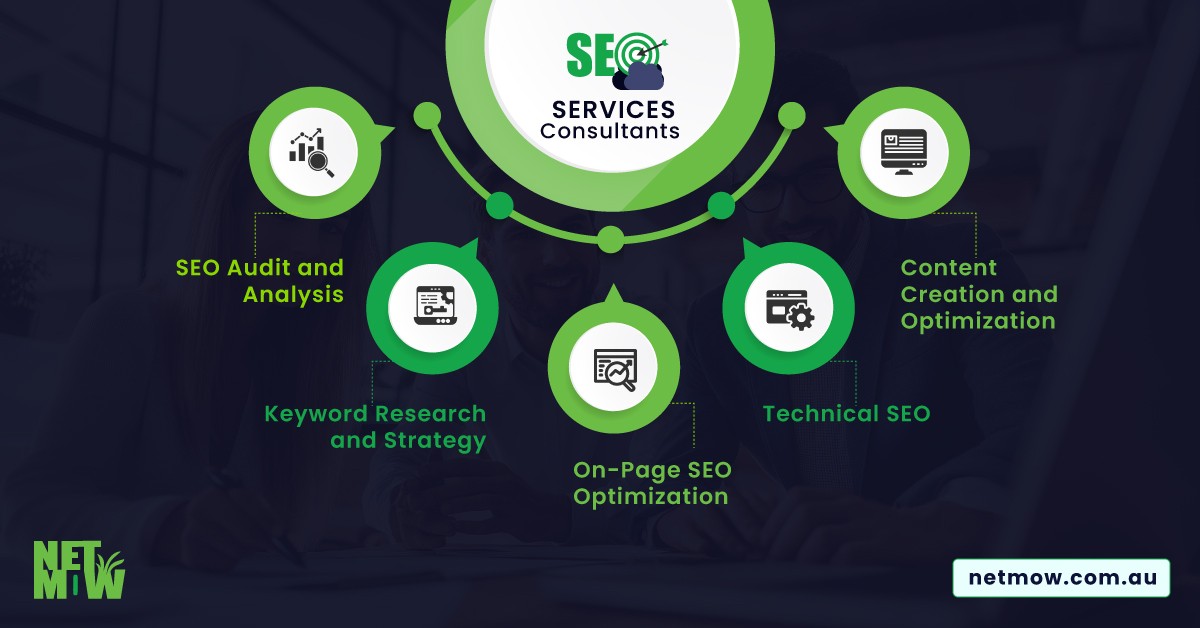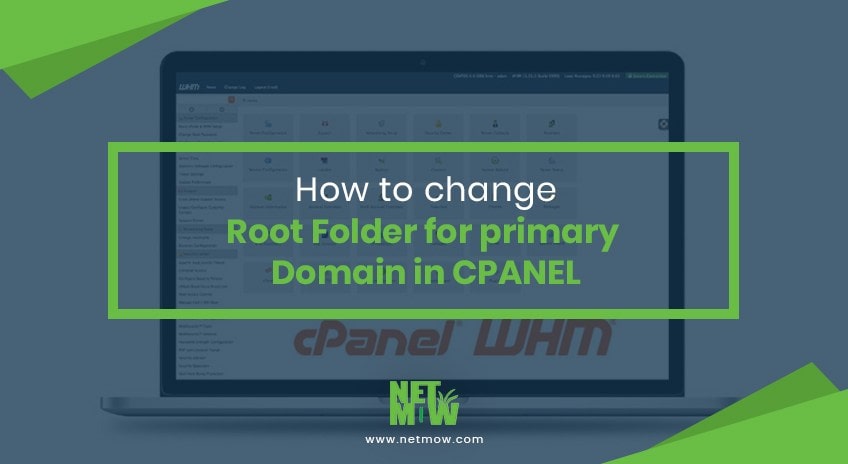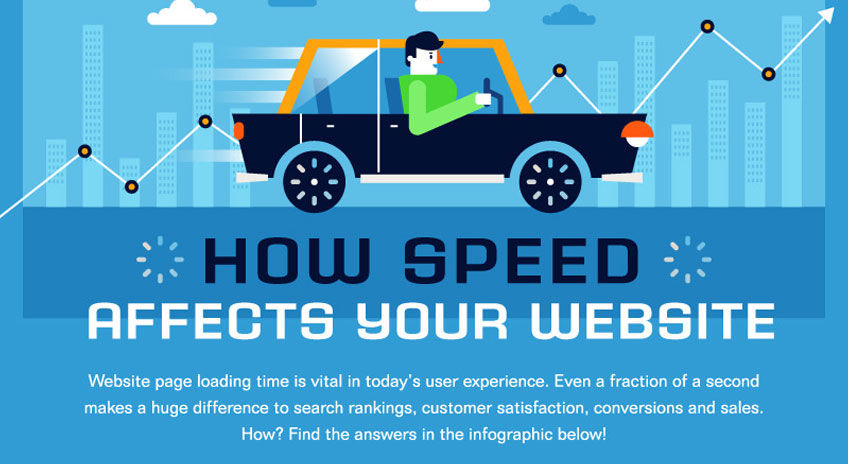
Speed is Essential.
There is no denying that a quick, nimble web page trumps a slow site. Both users and search engines know that.
Website load time statistics from numerous studies clearly show that if the average page load time exceeds 3 seconds, the abandonment rates soar. High bounce rates telegraph to search engines that visitors don’t find the website useful, which affects the ranking directly.
And if that wasn’t enough, the numbers clearly show that shoppers avoid returning to eCommerce sites with performance issues.
The marketing truism that there is no negative publicity doesn’t coincide with the digital reality of social media and inter-connectivity. Nearly half of the users share negative experiences with their peers, spreading the word of heavy, unresponsive sites faster than said web pages load.
As the Hitchhiker’s Guide to the Galaxy points out:
“Nothing travels faster than the speed of light with the possible exception of bad news, which obeys its own special laws.”
But how precious is a single second online exactly?
The most remarkable 1-second stats:
- 1 second delay reduces page views by 11%
- 1 second delay decreases customer satisfaction by 16%
- 1 second delay eats away 7% of the coveted conversion rate
- On annual basis, 1 second delay can lead to $2.5 million in missed revenue if your shop generates $100,000 per day
Very precious, indeed.
Average Page Load Time in 2017
The numbers below are from a Google page load time study about the average website load speed in 2017.
The stats for this year are yet to be collected and analyzed, but the data from 2017 is telling enough:
- 1-3 seconds load time increase the bounce rate probability by 32%
- 1-5 seconds load time increase the bounce rate probability by 90%
- 1-6 seconds load time increase the bounce rate probability by 106%
- 1-10 seconds load time increase the bounce rate probability by 123%
Pure and simple, faster pages are more attractive.
I guess, there is no need to tell you that a page that takes 10 or more seconds to load is a royal pain. With the constantly growing network speeds, staring at the screen while waiting for an image to render feels like ages.
The Google research quoted above found out that the average website load time on mobile borders eternity: 22 seconds. The average time for a page to load fully may be, but the number is abysmal!
Site visitors think so too, as the same study says that 53% of the web surfers leave pages that take longer than 3 seconds to load.
In case you are still wondering how fast a website should load, it is safe to say that under 3 seconds is the best. Across devices.
But that’s not all.
What We Have Prepared for You
We have prepared a catchy infographic that quotes other statistics from the Google study and not only.
Some of these website load time statistics were measured in-house, others were provided by our friends over at the SEOTribunal, thirds were found in different case studies from across the web.
What Is a Good Page Load Speed?
Quick pages are the standard. 2-3 seconds load time is tolerable, anything beyond the fourth already compromises the end user experience.
Like it or not, a whopping 79% of online shoppers state that any performance hiccup will make them stay away from an online store.
Worse yet, 44% would share the negative impression with friends online.
As is the case with so many other things, the Hitchhiker’s Guide to the Galaxy is spot on about the velocity of bad news.
Customer Loyalty
A 60 seconds delay in page loading time reduces end users’ satisfaction by 16%. This translates directly into a decreased desire to come back to the sluggish page.
Not only that but slower sites see greater bounce rates and considerably poorer sales.
1 second could make all the difference in the world between a successful transaction and a very poor interaction.
And here’s how precious a single second could be: $18 billion are lost annually because of abandoned shopping carts.
SEO
If all other things were not enough, good page load time affects website ranking with search engines as well.
The reason for that is twofold: customer behavior and crawler behavior.
I mentioned earlier that a slow page typically sees higher bounce rates. Visitors will click on it, wait for the site to load, and when it doesn’t display anything in 5 seconds or so will navigate away.
Such user activity indicates that the website doesn’t provide any value to the visitors. The Google algorithm penalizes sites that lack value with a lower rank. Even without a search engine penalty, a mere second delay in website page loading time reduces the number of page views by 11%.
Add to the mix the fact that the Google crawler, the piece of software that indexes websites, spends limited time on each site. If your entire website is slow to respond, then the bot will manage to index a limited number of the available pages, affecting adversely the chances of your site ranking well.
In other words, all other things being equal between competing sites – content, advertisement, smooth page navigation, etc. – the one that loads faster will rank higher.
You probably get it already; website speed is a complex matter that permeates all aspects of a successful online presence.
Check out this enticing, fact-packed graphic and find out:

Google Recommended Page Load Time on Mobile
Do you remember when I said that 53% of the users are likely to leave a mobile site that takes longer than 3 seconds to load?
That’s not even half of the story.
For some time now Google indexes mobile sites first. The mobile version of your site has a higher ranking value than the desktop iteration.
That’s why optimizing your site for mobile devices is crucial.
Mobile sites that load in 5 seconds or less see a massive increase in revenue. This coincides with the fact that 64% of smartphone users expect web pages to load under 4 seconds and you get a good estimate idea about the ideal loading time.
If at the moment your mobile site needs more time to load fully, don’t get dismayed. Studies about mobile website load time statistics reveal that the average page takes 22 (!) seconds to load on smartphones and tablets. All the same, try to speed things up as much as possible.
Start by finding the current speed.
How to Get an Accurate Average Page Load Time Benchmark
Before you panic and start looking for a web developer who can optimize your website, you must understand what slows it down in the first place.
Several free benchmark tools give a very good idea of what works well and what doesn’t.
They have slightly different ways of testing the website speed, so I recommend using them all to get the full picture. That’s what I am doing with my hosting reviews here, on the Hosting Tribunal.
Keep in mind that every time you run a page load time benchmark test, the results will fluctuate a bit even with the same testing tool. That’s absolutely normal, as small deviations occur naturally when testing servers in remote locations.
Here are the most popular tools to measure the performance of your website. All of them but Load Impact test the front end of your site, i.e. simulate what the user will experience. Load Impact puts a strain on the backend, testing how the server will handle the increased load.
GTMetrix
Comprehensive and powerful, GTMetrix is a free tool that gives a detailed analysis of everything that has to do with the performance of the tested website. You can select the location from which to run the test, as well as the type of browser, among other advanced options.
GTMetrix displays page load time metrics and a whole lot of recommendations on how and what to fix. It is one of the most detailed free tools you can find at the moment.
Indeed, it takes some time to browse through the variety of resources there, but if you want to make your websites load fast, the time investment is worth it.
WebPageTest
WebPageTest is another very detailed benchmarking tool. Again, you can choose a browser and location from which to test. The results can feel a bit overwhelming at first.
There are several tabs to go through to get all the relevant info.
Trust me, WebPageTest draws a really good picture of your entire domain.
Just like GTMetrix.com, this tool has extensive documentation that covers all aspects of the provided analysis.
Pingdom
Pingdom is one of the most popular tools for testing website speed. Recently, in summer 2018, it underwent a small revamp and now displays a relatively detailed set of performance stats right off the bat.
However, compared to GTMetrix and WebPageTest.org, the free Pingdom service is considerably poorer in data.
It gives another point of view, but for real in-depth analysis, it is not so useful.
Google PageSpeed Insights
A few years ago Google added to its webmaster console a speed testing tool. You can safely start your website page loading time analysis there.
Just like GTMetrix and WebPageTest.org, Google PageSpeed Insights provides decent feedback and advice on what to fix.
Again, take the results there with a grain of salt and make cross-references with the other benchmark tools to get a clearer picture of your site’s speed.
You can go as far as to consider the results a base, something like the recommended page load time Google would be happy about, but don’t read too much into it.
It is clear that the faster it loads, the better your site will be.
Load Impact
Load Impact is a robust tool that, if mastered, can give a real insight into the inner workings of complex websites. Even at its basic, free version, it provides a ton of information and records website speed statistics from each test, so you can compare how your site fares over time.
Its extensive documentation takes some time to go through but once your site sees some traffic, Load Impact is a great way to understand what works well and what doesn’t.
The most common test that can be done with a free account at Load Impact is to send up to 50 virtual users to test how the backend of your site responds to a serious strain. You can enable many metrics to clock in various aspects of your web host.
Whenever you wish to fix your site, take the time to test it through all of the above tools to gather the most detailed website load time statistics you can.
Once you have collected the necessary data, consider the fixes you can apply yourself.
Factors that Affect Speed the Most
The moment you run your site through GTMetrix and WebPageTest, you are very likely to see some common issues.
Many factors affect website speed, but there are also several optimization techniques that work across the board.
Here’s a rundown of the most common issues that increase the average page load time.
Simple Issues, Easy Fixes
Certain speed issues are much simpler than others and can be addressed without any technical knowledge.
Oversized Images
Images have their undeniable place on any decent website. The thing is that they must be optimized to perfection. Otherwise, they are bound to slow down everything and skewer your website speed statistics big time.
You see, pictures are normally the largest files on most web pages. As such, they require the most bandwidth to load and increase the website response times.
Now, optimizing images has several aspects, but the most basic thing you can do is to reduce their size without compromising the image itself.
In case your site is built on WordPress or Joomla, use a plugin to fix all images at once.
Easy.
If it is a custom-coded site, best use Adobe Photoshop, Gimp, ImageOptim, or another suitable visual editor that has the function “optimize for web,” “save for web,” or something like built-in.
Mind, image size for mobile devices is different than from a big screen.
Too Many Plugins
One of the major advantages of popular content management systems like WordPress and Joomla is their tremendous functionality. Paired with unparalleled ease of use, novice webmasters can go overboard without realizing it.
The mesmerizing functional opulence is tempting beyond imagination. Once you see the things you can install with the click of a button, you might feel lightheaded.
Power overwhelming.
This is all good and dandy, but the value plugins add to sites comes at a price. All add-ons need server resources to run properly. To be more specific, the vast majority rely on database queries to function.
Yes, this can increase the website load times. Significantly.
Make sure to use only the plugins you need. Have a clear concept about your site and how it will work. Remove, i.e., uninstall all unused plugins and never look back.
Caching
Caching means that content that has been seen once – typically, static HTML content – is served to the browser faster, from the server cache, instead of being retrieved the usual way.
It is extremely beneficial and easy to enable with the likes of Joomla and WordPress, as there are many plugins designed specifically for the purpose.
For custom-coded websites, you can talk with the technical support of your hosting provider to see what they would recommend. Most of the best website hosts have quality server-side caching.
GZIP Compression
GZIP compression is a very simple snippet of code added to the .htaccess file. It can be found online, but I’d recommend checking with the support of your web hosting provider about the best syntax. They should be able to insert it for you in no time.
GZIP reduces the overall amount of data sent from the webserver to the end user.
It is one of the easiest fixes and is as effective in reducing the average page load time today as it was 10 years ago.
GZIP, together with image optimization, is a must-have.
Use a Quality Content Delivery Network
Content delivery networks (CDN) benefit websites in many ways. They increase security, but also can overcome loading page problems in several ways.
Most notably, CDN serves static content (HTML, images, CSS, JS) from a server that is close to the user. That reduces the strain on the actual hosting server and reduces the time it takes for the information to travel due to the physical proximity between the user and the CDN server.
CloudFlare is probably the most popular free CDN right now, and it is quite easy to use.
To learn more about content delivery networks, check out our detailed guide.
Complex Bottlenecks, Advanced Fixes
Several things that require some technical knowledge can help with fast loading speed a lot. They are not extremely complicated but require some basic HTML understanding.
Multiple HTTP Requests
HTTP stands for the hypertext transfer protocol
Every time you type in a URL, your server requests an HTTP response from the hosting server. Basically, the browser asks for the site content to be sent over. What you and I see as text, images, videos, menus, and buttons usually is contained within HTML tags that are styled by a CSS or two, and are made more functional by JavaScript.
All these resources that shape up a web page can be structured in several ways. Sometimes their organization is sub-optimal, and that leads to multiple HTTP requests and increased loading page time.
Minify HTML, CSS, and JavaScript
Minifying files means removing anything unnecessary.
Quality programming and web development follow certain best practices, which make the code more orderly and much easier for the human eye to read.
However, the code of live pages doesn’t really need to have line breaks, comments, or whitespaces. All these can be removed to reduce the sheer size of the files.
There are free online tools that can help you with this.
Don’t forget to keep a copy of your site with nicely written code for troubleshooting purposes and as a backup. Slowly loading pages are preferable to no pages at all.
Combine HTML, CSS, and JavaScript Files
If your page relies on several Cascade Style Sheets to look pretty and executes JS from multiple files, you can combine them all into one or two files.
This practice is much more efficient with HTTP/1.1 because HTTP/2 can handle simultaneous requests without much of a strain.
Most modern website hosting companies already support HTTP/2, and it is bound to become the de facto standard fairly soon, so combining resources will not affect the average website load time that much.
I am curious to see how the website load time statistics across the web will change once HTTP/2 is adopted by everyone.
Move JavaScript Down
Snippets of JavaScript often hog resources and bottleneck the smooth loading of a web page.
Moving them at the bottom, just before the </body> tag, would make the browser render them last after all other elements have been loaded.
As a result, even though the time for the page to load fully will not decrease, users will be able to read the information they came to your site for.
These are only a few of the most common issues and their respective fixes. To achieve stellar performance across the board, you’d also need a decent web hosting provider.
Check out our benchmark tests and detailed reviews to find the very best for your needs.
Average Website Load Time in 2019 and Beyond – What to Expect?
A good page load time now doesn’t guarantee stellar speeds down the road.
Site updates, theme upgrades, new plugins, insufficient hosting power, and unseen glitches are bound to happen as your web presence grows.
Make sure to follow the best practices outlined above and to test the performance of your site regularly.
The Google website speed statistics I quoted at the beginning of this guide reveal that the average web page load times are 8-10 seconds, depending on the industry.
You can beat that. You can make your site load in half that time with proper optimization, good hosting, and scaled images.
It is not rocket surgery.
FAQ
Q: How long should it take for a page to load?
A: 2-4 seconds on a desktop, under 9 seconds on a mobile device are the answers statistics give. Without a shade of doubt, the faster, the better. Realistically, small-to-medium sites hosted on a good shared server should be able to load for under 4 seconds without any problem. And even if the time to load fully exceeds 4 seconds, they can be optimized to display most of the relevant information within this timeframe to reduce the bounce rate significantly.
Q: What is page load time?
A: There are two main metrics for page speed: time to first byte (TTFB) and fully loaded page. The former is the time it takes for the server to send back the first byte of data. It is useful to give you an idea about the server speed but useless about user experience because the first byte bears no meaningful information for us humans. The time it takes for a site to load fully is more important in that regard, even though it also could be slightly misleading for the simple fact that a certain element might take forever to load. Even without it, though, users are likely to access the information they came for without much of a problem.
Q: Which sites are the fastest: WordPress, custom-coded, or those built on website building platforms?
A: It is difficult to answer, as there are many factors that influence loading times. Generally, custom-coded sites, when executed to perfection, should be the fastest. Then again, WordPress has so many plugins for optimization that achieving excellent results there is very easy, especially when the hosting provider is optimized for the platform. Website builders, on average, are deemed to be slower but they also have easily applicable optimizations to boost speed, and well-coded platforms like Ucraft, for instance, deliver quite nimble pages. Keep in mind that this is a generalization, as any site can be very quick with proper care.
Q: How do I see page load time in Google Analytics?
A: To see page load time in Google Analytics, you must sign in to your Analytics account, then navigate to your view, and open Reports. From there, select Behavior and choose Site Speed. This is the fastest way to check your site speed through this powerful tool. To interpret the results, best go through this Google guide.
Q: How fast does my page load?
A: Run a benchmark test with GTMetrix and WebPageTest to find out. Test your site from the location (continent) where the majority of your visitors reside, as this will give you the best idea of how things happen for them. Both tools allow you to test the home page of your site or a specific URL. The latter could help to determine the performance of a highly-visited page.
Q: How can I make a page load faster?
A: By reducing images, adding GZIP compression, enabling caching, removing unnecessary redirects, utilizing CDN, minifying HTML, CSS, and JS files, and using the best hosting you can find. In case you use a content management system, make sure to keep the plugins at the necessary minimum and to keep everything up-to-date. Whenever possible, update to the latest stable version of PHP as well, as every new iteration improves performance. Do even half of these while measuring the performance after each fix and your website load time statistics will become a source of pride (and income) rather than worry.
Source Link: Hostingtribunal.com
https://netmow.com/restore-a-wordpress-website-by-using-duplicator-plugin/
Related Article

Maximise Your Business using On-Page SEO in Gold Coast, Australia
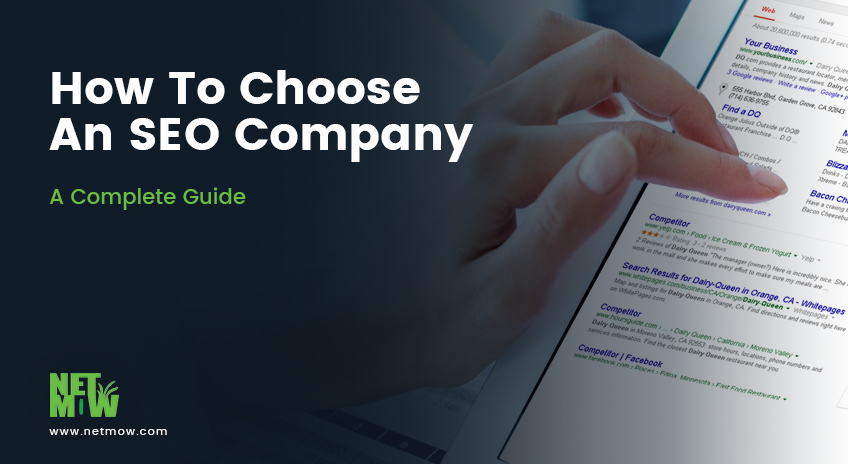
How To Choose An SEO Company – A Complete Guide
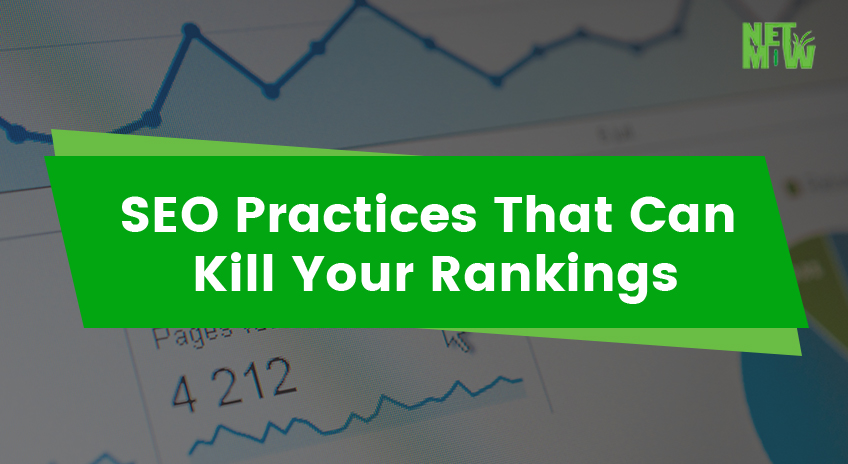
SEO Practices That Can Kill Your Rankings






